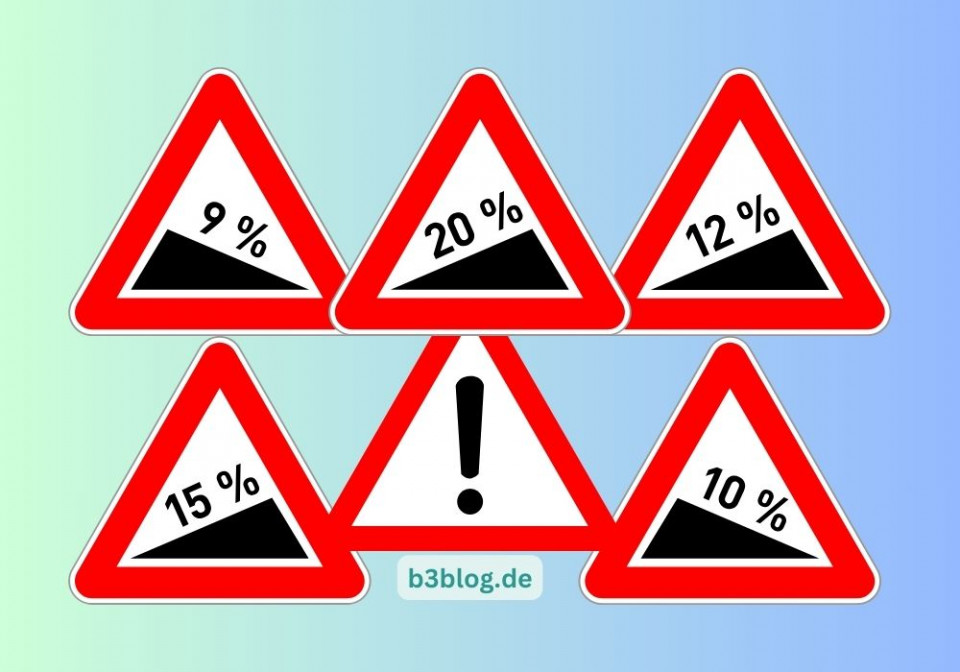Christmas is this for some and that for others. The run-up to Christmas is above all a time for making wishes. A good opportunity to write down our digitalization wish list and take a closer look at some of our wishes. The focus is always on the question of how innovative data processing and technological advances can be shaped in such a way that not only companies but also our society is transformed sustainably and in a positive direction - while keeping everyone on board.
Shaping the future on the data highway
Data processing forms the backbone of the digital transformation, and its potential is enormous. In theory, it looks like this:
Intelligent algorithms and automated systems enable companies to optimize their processes and develop new business models. These technologies not only enable the efficient processing of large volumes of data, they also help to improve decision-making. Companies that use data strategically create customized solutions that meet the needs of their customers. At the same time, the challenge is to comply with data protection regulations and maintain ethical standards. Finding a balance between innovation and responsibility is crucial for long-term success.
This means that in an ideal world of digitalization, users benefit from personalized offers, while companies use data to improve their projects. In a world where information is the key to progress, the ability to process data in a meaningful way becomes a decisive competitive factor. Only a proactive approach to these challenges makes it possible to exploit the full potential of the digital future while always keeping social values and ethical aspects in mind.
What are the benefits of digitization?
Will innovative technologies really become a driving force for positive change in society? It would be nice if they did. Let's start small with our search for best practice examples in a huge area that affects us all at some point in our lives: medicine. Even we mere mortals become patients when an injury, infection, cardiovascular disease, depression or other illness can only be treated with medical help.
Artificial intelligence and machine learning are revolutionizing the healthcare industry by enabling more precise diagnoses and personalized treatments. This not only enables new treatment approaches and vastly improved chances of recovery, for example for many types of cancer. Improved methods not only require all medical staff to be aware of them. Patients and their relatives also need a guide to the new world of information, which still all too often appears to the individual as an impenetrable jungle of digitalization.
Speaking of the jungle.
A user view of ePA and e-prescription
Everyone has heard of the e-prescription by now, I assume. It's practical too, no more fiddling with paper. The health insurance card - now: health card - is enough to get the prescribed medication handed to you at the pharmacy. Fortunately. Because there is also an app for this, but ... What should be a relief (apps are so practical) turns out to be an obstacle course, a difficult hurdle to overcome, something that requires a lot of patience. Have you already set up the app? Then you know what I mean. Or did it all go very quickly for you?
Data protection is good and important, I fully understand that. But if it means having to spend quite a lot of time in everyday life downloading updates, entering passwords and access data or collecting them in the first place, then managing them and, above all, finding them again when you only need them once in a blue moon - then you start to wonder: perhaps such compromises can be found where user-friendliness is not completely neglected in favor of data protection. A look at Wikipedia reveals that work on the introduction of e-prescriptions has been going on since the early 2000s. The e-prescription became mandatory in 2024, but there is still room for improvement in many respects.
In 2025, the electronic patient file, or ePA for short, will finally be used for real. I am curious. Will ePA really work in 2025?
My digital wish list
Creative approaches to integrating new technologies are necessary. Digital tools can be used to optimize processes for people and their needs. This is also worthwhile from a company perspective: efficiency increases, team satisfaction and motivation improve, innovative strength increases and the company is more successful. It's quite simple. And I am very modest. First of all, I hope that the ePA app will finally be used (and that I will be able to log in again in the new year).
My main wish is that I no longer need a printer or scanner because all transactions can be done digitally. The reality isn't there yet, real life is lagging a little behind. That's why I'm currently looking for tips on portable printers that are not only small enough to fit in my luggage, but are also affordable. And no, I don't mean a photo printer. DIN A4 should be possible. Thank you!
Shaping the digital future
Despite all the hype surrounding data processing, digitalization and new technologies, what really matters in the end is quality of life. In addition to a good work-life balance, the goal always remains to secure and improve our own quality of life. This works better if we work together on meaningful goals that are beneficial to all individuals in society. I believe that every small step helps us move forward. The end of the year is a good time to reflect on your own ideas about quality of life. And to give yourself something, for example more time. The Association for the Delay of Time explains how this can work. And gives us something extremely useful for the holidays: the no shopping list and the not-to-do list. Both can be downloaded free of charge here.


